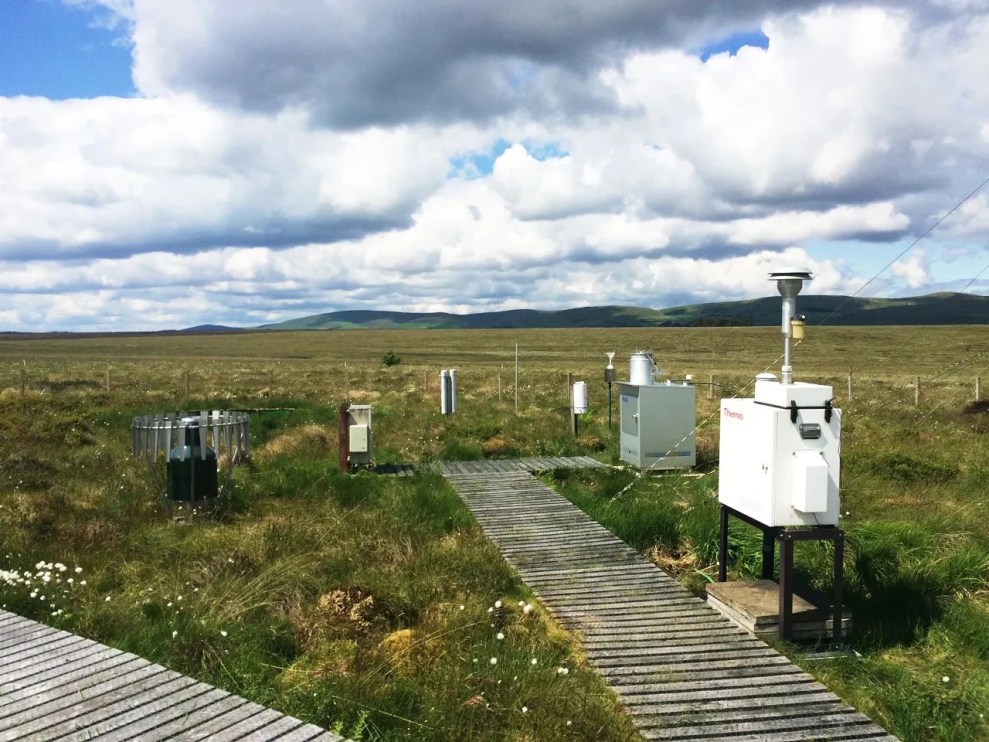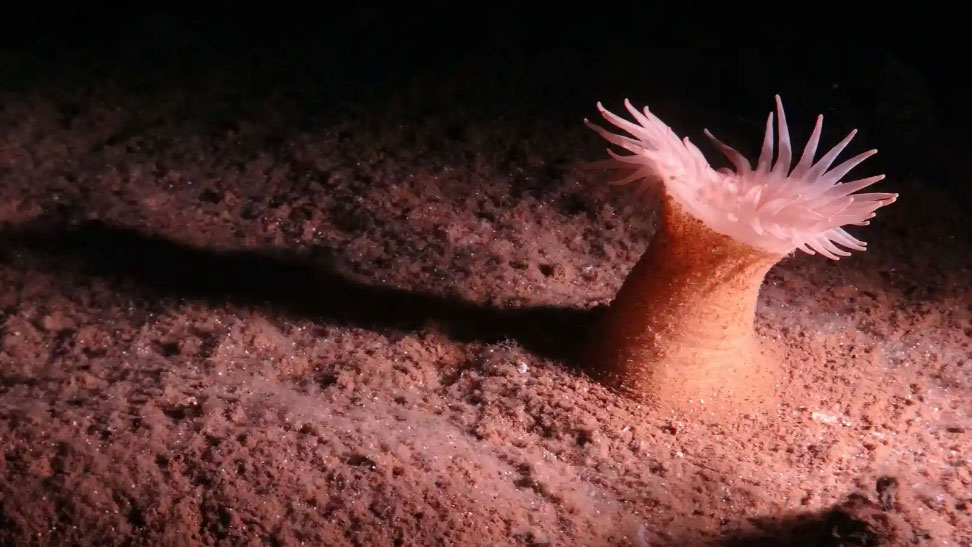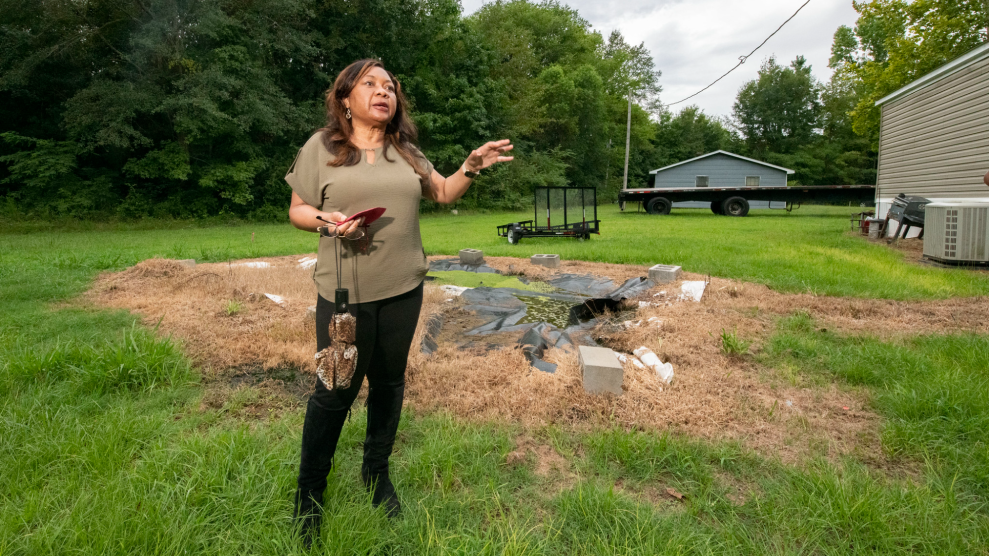
Steve Back/Getty
This story was originally published by Wired and is reproduced here as part of the Climate Desk collaboration.
Every living thing spreads an invisible signature across its landscape, whether it’s a badger ambling through the grass, an oak growing in the forest, or an eagle soaring overhead. Fur, feathers, skin cells, spores, pollen—all of it is loaded with genetic information that floats away into a data-rich atmospheric soup. Scientists call this information environmental DNA, or eDNA, and it is so potent that in January 2022 researchers announced they’d been able to identify the species in two zoos just by sampling eDNA in the surrounding air.
James Allerton, an air quality scientist at the UK’s National Physical Laboratory, read about that experiment and had one of those wait just a minute ideas. The laboratory operates a number of air quality monitoring networks, including the UK’s heavy metals network. At these monitoring stations, air passes through filters, which are then analyzed to measure levels of toxic metals. “We had not sat at NPL thinking: I wonder if there’s recoverable DNA material on these filters?” Allerton recalls. Yet the idea was too intriguing to ignore. “When you read a report about people who’ve successfully managed to capture animal DNA out of the air—and there we are, working in particulate measurements—then you have the light-bulb moment.”
In particular, Allerton and fellow NPL air quality scientist Andrew Brown wondered if the lab’s instruments had inadvertently been accumulating a bounty of eDNA that would track local biodiversity. “Some of them in the UK were established as far back as the 1960s and 1970s,” says Brown of the monitoring stations. “So they’re effectively out there taking samples in exactly the same way every single day, every single week, every single month of every single year for a very long time.”

Thousands of sampling stations around the world have been inadvertently collecting biological data.
Courtesy of NPL
The two reached out to the biologists behind the zoo study—Joanne Littlefair of Queen Mary University of London and Elizabeth Clare of York University Toronto—to join forces. Today in the journal Current Biology, they’re announcing their groundbreaking findings: Between an air quality monitoring station in Scotland and another in London, they were able to detect over 180 kinds of organisms via eDNA. That includes a menagerie of animals, like deer, hedgehogs, badgers, and newts; plants that include trees, grasses, wheat, and other crops; and 34 species of birds, including songbirds, pigeons, and little owls.
Their study suggests that atmospheric scientists all over the world have been accidentally collecting genetic data that could give biologists unprecedented insight into changing ecosystems. This would be a vast and incredibly valuable cache of information. “Even weekly samples at thousands and thousands of sites is more data on biodiversity than we’ve ever seen,” says Clare. “In biodiversity science, we consider annual surveys to be high-resolution data. So the idea that there are weekly surveys being carried out like this—that are basically automated—is something that I don’t think we’ve ever considered before.”
In fact, Clare says, air quality scientists hadn’t considered it, either. “We’ve had a lot of these conversations with scientists the last couple of weeks and people who run these networks,” says Clare. “When we say: ‘Did you realize it does this too?’ They all have a moment of sort of shocked look on their face. And then they go, ‘Oh, but of course it must.’ It really seems obvious once you’re told about it, but it isn’t obvious, because the people operating them aren’t biologists.”
Airborne eDNA could turn into a powerful tool for preserving species, says Craig Leisher, director of monitoring and evaluation at the Nature Conservancy, who wasn’t involved in the new research. For example, if the DNA of an invasive species begins to waft into a protected area, atmospheric instruments could alert conservationists to the threat. Such monitors would be particularly powerful on islands, which are highly vulnerable to invasive species, like rats: If an instrument gets a whiff of rodent DNA, it could immediately prompt conservationists to spring into action.

The team’s London station is right next to a sprawling park—and its many organisms.
Courtesy of NPL
This would supplement other techniques for monitoring invasive species, like camera traps and acoustic sensors, which have particular shortcomings. Some species won’t trigger cameras or vocalize for microphones—think of an invasive insect, for example. “eDNA would add a chance to catch some of those cryptic species,” Leisher says. “It has tremendous potential as a complementary tool.”
And eDNA could help biologists identify and track elusive creatures. Biologists have already tested eDNA sampled from water bodies and detected aquatic species that they hadn’t been able to physically observe—and some that might be new to science.
Still, interpreting airborne eDNA data turns out to be quite complicated. For one thing, not all species produce the same amount of DNA. A massive oak tree will dump more pollen than an individual wildflower, and deer shed more hair than mice. “Birds, they visit ephemerally, but they’re also very flappy,” says Littlefair, the biologist at Queen Mary University of London. Presumably they inject lots of DNA into the air—and might even fly right by a sampler. On the other hand, the odds may not be as great for detecting, say, a worm. “Some kind of small ground-dwelling invertebrate may be releasing less DNA,” Littlefair says, although “you’ve got the potential for the wind to pick up residue or sediment on the soil and then redisperse it back in the atmosphere.”
At the moment, airborne eDNA information registers whether a type of DNA was detected or not. It’s more difficult to tabulate how many animals or plants of each species were in a given area, or register how long they were there. This requires additional research, as it could provide more granular information about populations, suggesting, for instance, that an endangered species might be growing more acutely endangered.
Researchers would have a better chance of tracking longer-term trends if the operators of air sampling stations could be convinced to store their used filters and then turn them over to biologists. But among the thousands of air stations worldwide, some operators might not keep their filters at all, while others might store them for decades.
The operators of the station in Scotland—a facility that’s part of the UK’s heavy-metal monitoring network—do consecutive, week-long samples and are required to keep the filters for a year to 18 months. Although DNA degrades over time, the researchers were able to get good samples from filters that were eight months old. “That gives us huge incentive to look at archived older samples that some countries keep, which might be preserving data long-term,” says Clare. “If even some of those are viable going back, then it has an unbelievable potential treasure trove of data.”
The researchers compared the Scottish data with samples they took from an NPL facility next to London’s Bushy Park, a sprawling wilderness area that’s home to herds of deer. Because this sampler wasn’t officially part of the monitoring network, they could vary the sampling times in London from an hour to a day to a week and look at a broader range of particle sizes. They also tried immediately freezing the filters to improve the odds of getting viable DNA. That ended up with similar results to the sampling experiment in Scotland, suggesting that standard air-monitoring stations around the world are already equipped to take accurate readings of eDNA.
For the research team, the race is now on to convince operators of air stations everywhere to stop throwing out their filters. “We’re trying to, as fast as possible, raise the alert that this is a set of data which has basically been perhaps lost for decades,” says Clare. “We hope that some of it is recoverable. But if not, start saving it now.”












